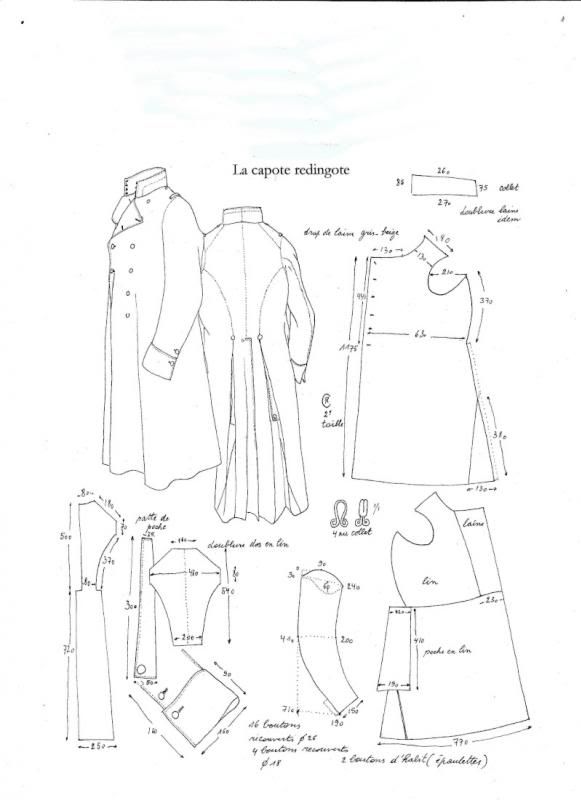The fascinating thing about it, of course is the "material"--thousands of little squares of roll printed cottons--according to my calculations (roughly 34 diamonds in height, divided into 55" center back length) each diamond is only 1.5 inches tall (give or take 0.15). Looking closely at the diamonds, it appears that they are sewn with an overcast stitch, rather than a running stitch. The garment is lined in a plain white cotton, and there is no supportive flatlining under the patchwork (there is a small hole near the right top sideseam, through which you can see the seam allowance).Date: ca. 1825Culture: BritishMedium: cottonDimensions: Length at CB: 55 in. (139.7 cm)Credit Line: Brooklyn Museum Costume Collection at The Metropolitan Museum of Art, Gift of the Brooklyn Museum, 2009; Designated Purchase Fund, 1983Accession Number: 2009.300.999The dressing gown featured here is an extraordinary piece of hand work. The use of many different lively roller print patterns gives it an eye popping appeal and makes this piece a sampler of the various patterning from this period. Roller printing was introduced and then patented in 1783 in an attempt to reduce the cost of copperplate printing as well as to ease the printing process of small, repeat patterns.
I surmise that the sleeves are slightly long, coming a bit past the wrist, and have cuffs with two buttons. They are pleated into the scye at the top, and have visible wrinkles under the arm, showing that the sleevehead was fairly shallow to allow for better movement.
The double breast is fastened with 14 buttons, each of which is covered in the same patchwork cloth as the rest of the garment. In addition there is one cross bar (at the waist) with a center button--I am honestly not sure how it works; obviously it is fastened at the side end to help cinch the fabric at the waist, but how it is attached at the other side?
The buttonholes are plain, with no keyhole, and the lowest button appears to be somewhere around the lower hip.
When you (closely) at the back, you can see that there is a pleat in the center--based on the folds, I believe there is a vent there. It also appears that there is a very small (maybe 1/2 inch depth) pleat on the side seams as well, with a button at the top of each. Even more fascinating, and barely visible, is that there are plait pockets--with two buttoning flaps--set into each side pleat.
Strangely, I see no sign of a hindarm seam, and looking closer at the left arm in the above photo, you can see that there is instead an underarm seam.
My best guess is that the pattern looked something like this, albeit with a much longer skirt and possibly less flare. The front-side seam also does not curve out, but is fairly straight other than curving forwards at the top.
 |
| From History in my Wardrobe |
 |
| Or this one of the French m/1860 (if I recall), from HERE. |
Source: http://www.metmuseum.org/collection/the-collection-online/search/159591?=&imgno=1&tabname=label, and photos copyright the Metropolitan Museum of Art (other than the last).
©
John Frey, 2015. The Author of this work retains full copyright for this
material. Permission is granted to make and distribute verbatim copies of this document
for non-commercial private research or educational purposes provided the
copyright notice and this permission notice are preserved on all copies. Photographs of my work may not be duplicated.





No comments:
Post a Comment